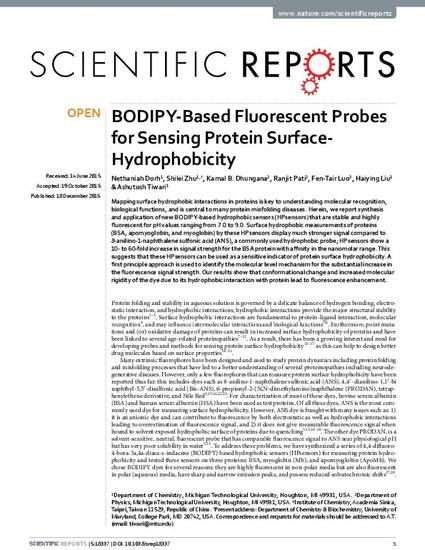
Mapping surface hydrophobic interactions in proteins is key to understanding molecular recognition, biological functions, and is central to many protein misfolding diseases. Herein, we report synthesis and application of new BODIPY-based hydrophobic sensors (HPsensors) that are stable and highly fluorescent for pH values ranging from 7.0 to 9.0. Surface hydrophobic measurements of proteins (BSA, apomyoglobin, and myoglobin) by these HPsensors display much stronger signal compared to 8-anilino-1-naphthalene sulfonic acid (ANS), a commonly used hydrophobic probe; HPsensors show a 10- to 60-fold increase in signal strength for the BSA protein with affinity in the nanomolar range. This suggests that these HPsensors can be used as a sensitive indicator of protein surface hydrophobicity. A first principle approach is used to identify the molecular level mechanism for the substantial increase in the fluorescence signal strength. Our results show that conformational change and increased molecular rigidity of the dye due to its hydrophobic interaction with protein lead to fluorescence enhancement.
Available at: http://works.bepress.com/ashutosh-tiwari/14/

Article deposited here in compliance with publisher policies. Publisher's version of record: https://doi.org/10.1038/srep18337